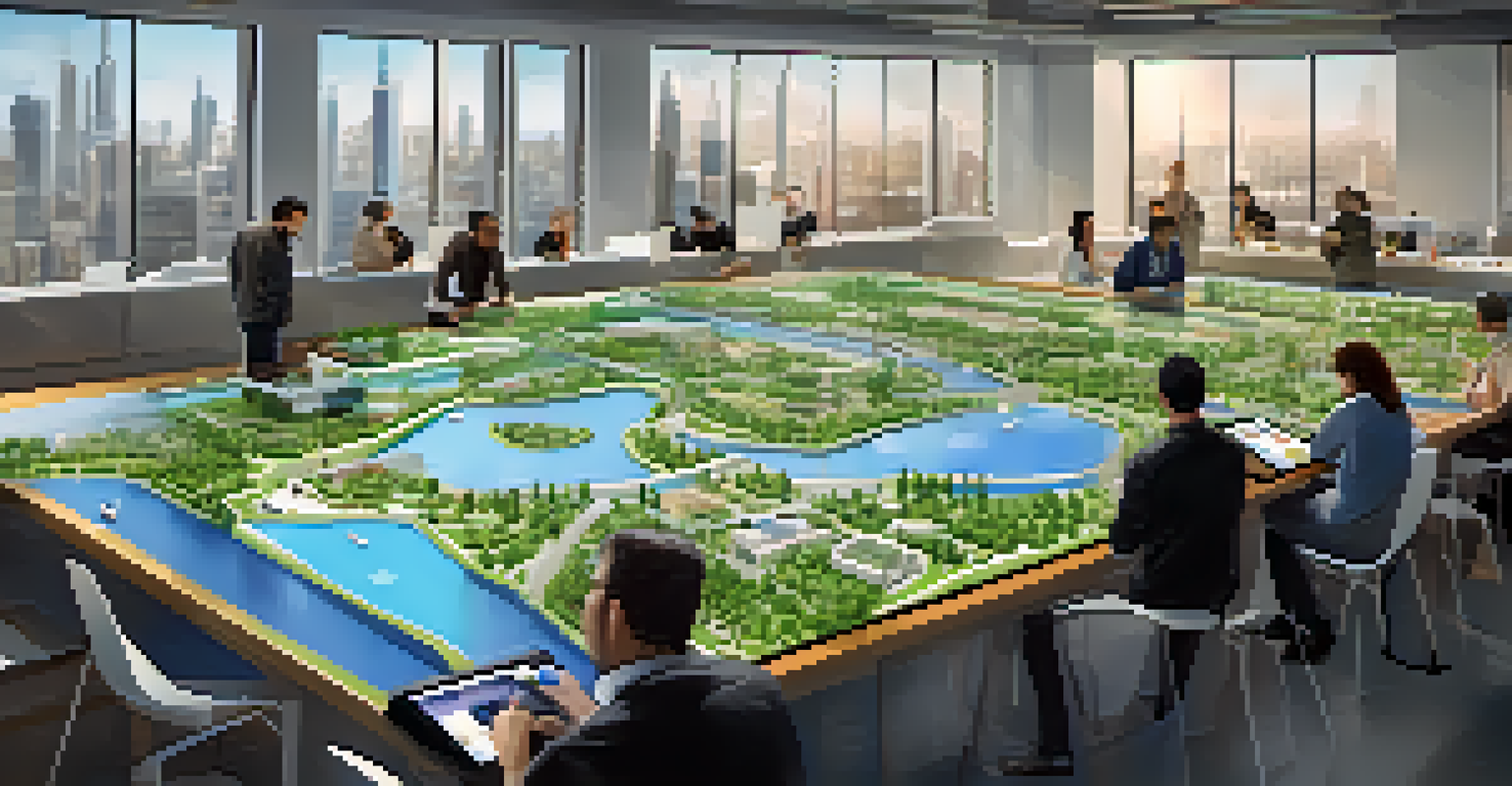Building Trust: The Role of Transparency in Urban Planning

Understanding the Basics of Urban Planning
Urban planning is the process of designing and organizing urban spaces, encompassing everything from transportation systems to public parks. It aims to create functional, sustainable, and aesthetically pleasing environments where communities can thrive. By understanding the intricacies of urban planning, stakeholders can better appreciate how transparency plays a pivotal role in the process.
Good planning can help to create a beautiful world, a world that reflects the values of the community rather than those of a few powerful individuals.
In simple terms, it’s about making cities work for everyone. Think of urban planning as crafting a recipe: each ingredient must be carefully considered and measured for the dish to turn out delicious. When transparency is incorporated, it ensures that every ingredient is visible and understood by all involved.
Ultimately, a well-planned urban environment can enhance quality of life, but achieving this requires collaboration and open communication among various stakeholders, including citizens, government officials, and developers.
The Significance of Trust in Urban Planning
Trust serves as the foundation for effective urban planning. When citizens believe that their voices are heard and their concerns are addressed, they are more likely to engage actively in the planning process. This participation can lead to better outcomes, as more perspectives can result in a more comprehensive understanding of community needs.

Imagine planning a community garden without consulting the neighborhood; you might end up with a design that doesn’t suit anyone’s preferences. Trust fosters collaboration, ensuring that plans reflect the true desires of the community rather than the whims of a few decision-makers.
Transparency Builds Community Trust
Incorporating transparency in urban planning fosters trust among citizens, encouraging their active participation and collaboration.
Without trust, even the most well-intentioned plans can face significant opposition. Transparency becomes crucial in building this trust, as it allows stakeholders to see the rationale behind decisions and feel included in the process.
Transparency as a Tool for Engagement
Transparency in urban planning is about clear communication and making information accessible to everyone. This means sharing data, timelines, and decision-making processes openly. When communities have access to this information, they feel empowered to ask questions and provide feedback, leading to a more engaged public.
The key to successful communication is transparency; it helps to build trust and foster a sense of community ownership.
Think of a city council meeting where residents can see plans, maps, and budgets laid out for discussion. This openness invites participation and encourages citizens to voice their opinions, ultimately leading to solutions that benefit the entire community.
Furthermore, when urban planners are transparent about potential challenges or trade-offs, it sets realistic expectations. This honesty helps prevent future conflicts and fosters a collaborative spirit as everyone works together towards a common goal.
Building Relationships Through Open Communication
Open communication is key to building relationships among stakeholders in urban planning. When planners share information in a straightforward manner, it helps bridge the gap between technical jargon and community understanding. This connection is vital for fostering a sense of belonging and ownership among residents.
Consider the analogy of a bridge: it connects two sides, allowing for the flow of ideas and concerns. Similarly, transparent communication acts as a bridge, ensuring that planners and the community can share their insights and aspirations openly.
Open Communication Enhances Engagement
Clear and open communication between urban planners and the community serves as a bridge, facilitating the exchange of ideas and concerns.
By maintaining consistent dialogue, urban planners can nurture relationships based on mutual respect and trust, making it easier to navigate challenges and celebrate successes together.
Case Studies: Successful Transparent Urban Planning
Many cities have embraced transparency in their urban planning processes, leading to successful outcomes. Take Barcelona, for instance, where the city implemented an open data initiative that allows residents to access valuable information about urban projects. This approach has not only increased public participation but has also enhanced trust in local government.
Another example is Portland, which actively engages its citizens through workshops and online platforms. Here, community input directly influences planning decisions, showcasing how transparency can lead to innovative solutions that reflect the needs of diverse populations.
These case studies illustrate that when transparency is prioritized, it can lead to more informed decision-making and ultimately create urban spaces that truly serve the community.
Challenges to Implementing Transparency
Despite the benefits, implementing transparency in urban planning is not without challenges. Resistance from stakeholders who prefer to maintain control over information can hinder progress. Additionally, the sheer volume of data can be overwhelming, making it difficult for the public to engage meaningfully.
Imagine trying to navigate a massive library without a catalog; it would be easy to get lost. Similarly, without clear organization and communication, the wealth of information can alienate rather than involve the community.
Technology Fuels Future Planning
The rise of technology offers new tools for transparency, enabling residents to engage with urban planning processes in real-time.
Addressing these challenges requires a commitment to simplicity and clarity. Urban planners must strive to present information in digestible formats, ensuring that all community members can participate in the dialogue.
The Future of Urban Planning: A Transparent Approach
As cities continue to evolve, the role of transparency in urban planning will only become more critical. The rise of technology offers new tools to share information and engage with communities. From interactive mapping platforms to social media, urban planners have unprecedented opportunities to connect with residents.
Envision a future where community members can participate in planning through virtual town halls or interactive applications that allow them to explore proposed changes in real-time. This kind of transparency can empower residents, making them active participants in shaping their environment.

Ultimately, as we move forward, embracing transparency will not just be a best practice; it will be essential for building resilient, inclusive, and vibrant urban spaces that truly reflect the needs and desires of the communities they serve.